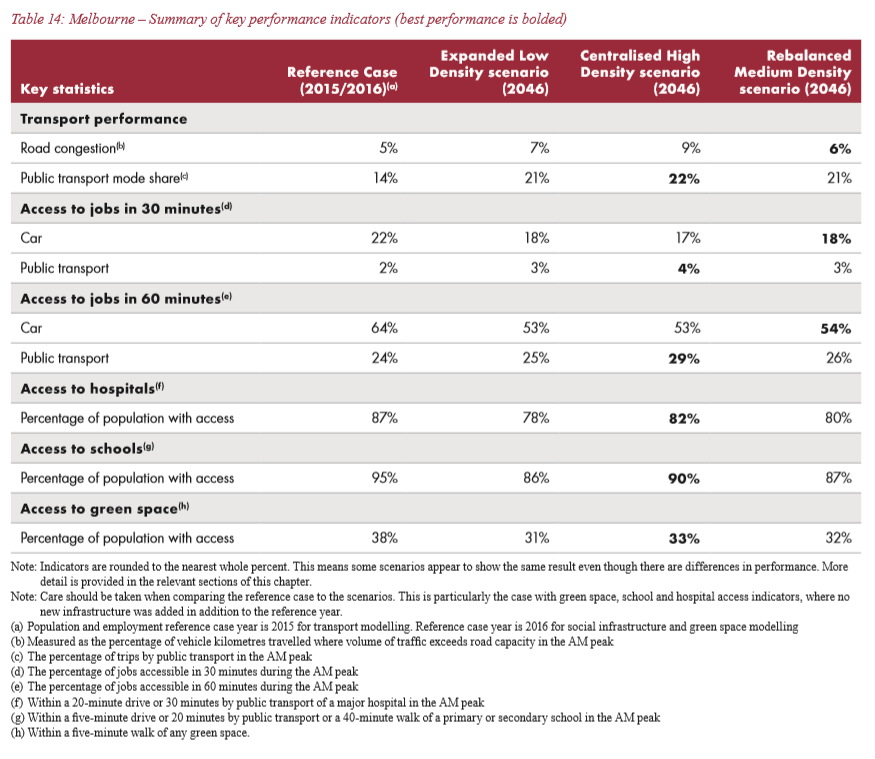For years, prominent architect Rob Adams has spruiked the benefits of population growth and densifying Melbourne.
For example, back in 2009, Adams confidently claimed that Melbourne could “easily” double its population without high-rise, simply by inserting some “linear low-rise” along transport corridors:
“I don’t think they need be above 5 or 6 stories. . . . you could add 3.3 million people to Melbourne and only change 6% of the city, mainly around the transport corridors, the trains and so on… We can do it easily”.
Adams even made the bizarre claim that doubling Melbourne’s population should not increase emissions because the city was already beginning to supply its own energy from “geothermal”, from the very suitable rocks below.
Throughout, Adams has claimed that “bigger cities are better cities” – a view passionately espoused in his 2010 TED talk.
With this background in mind, it’s interesting to read Adams’ concern this week in Fairfax, whereby he lamented the explosion of high-rise apartments across Central Melbourne because they are “trashing” the city’s streets:
Many of the apartment towers that now fill Melbourne’s skyline are “trashing” the city’s streets…
“Having more people [in the city centre] is a good idea, but how do we have more people and not trash the area?” asked Rob Adams, Melbourne City Council’s director of city design…
[Adams] focuses on the proliferation of super-dense towers built or approved on small sites that he says are, in some cases, ruining the same streets that have made Melbourne a pleasant place to walk.
“Australia’s coral reefs, we’ve made them so popular that people drop anchor all over them and slowly those anchors trash the very thing that we’ve come to see. It’s the same concern with the city,” said Professor Adams.
Wider Melbourne is predicted to grow from 4.6 million people today to more than 8 million by the middle of the century and, since 2002, 54,254 apartments have been built in the Melbourne City Council area (which includes Southbank, Carlton and North Melbourne).
Many of these have been built on very small sites… [and] “made every site in town potentially a development site, posing the single biggest threat to the look and feel of the city”, Professor Adams said…
Some new buildings held the population of a small rural town, Professor Adams said, and needed similar services – garbage collection, power substations, car parking. Too often, these were being put on major streets. “There is nothing to engage the public.”
The opening up of smaller sites has also meant many older buildings without heritage listing – the ones that provided “low-rent building stock” for bars or cafes, or for creative ventures – are being torn down, to be replaced with apartments.
Oh the irony. What happened to the “bigger cities are better cities” claim?
It’s also worth pointing out that according to Infrastructure Australia’s latest report, even if Melbourne adopts a Manhattan-style (centralised high density) urban form with 80% in-fill development, public transport’s modal share will barely increase (to just 22%), road congestion will worsen, and access to jobs, schools, hospitals and green space will all deteriorate as Melbourne’s population balloons to 7.3 million people by 2046:

But wait, it’s not just the inner city that is being trashed, but long suffering residents in Melbourne’s West as well:
Bulging satellite suburbs on Melbourne’s western edge such as Rockbank have developed faster than anyone predicted, and outpaced the supply of basic services – most crucially, public transport.
About half of Melbourne’s growth to 6 million people by 2031 will see people move to growth areas in the west, north and south-east, but official figures show the greatest surge will hit Melbourne’s west, which, by 2051 will have absorbed an extra 920 000 people. That’s the size of five Geelongs.
Only 13 per cent of people in Wyndham and 4 per cent in Melton live 400 metres from a public transport service that runs every half hour…
Rail services from the west are so stretched, that even if one extra train was added to the Wyndham Vale line during the peak period, this would transport just 900 extra people. That’s a fraction of what’s needed for the 230 people moving to Wyndham every week.
Railway lines aren’t built overnight; the Regional regional rail link took six years to build, and the Melbourne Metro Tunnel, which will free up capacity on the Sunbury line, will be completed by 2025.
But experts warn that booming suburbs in the west can’t wait seven years to receive the benefits of the new underground rail, with the Andrews Government promising to electrify the Melton line after the tunnel is built…
But investing in Melbourne’s rail network is not be enough to stop the growing isolation of Melbourne’s newer western suburbs.
Many of the bus routes in the west bypass old and new estates, leaving entire suburbs cut off from jobs and services, says Craig Rowley, chief executive of LeadWest, a nonpartisan advocacy group representing six councils in the west.
Only two bus routes cross the west’s industrial area covering sections of Laverton, Laverton North and Altona. They run once every 45 minutes, in the peak…
“The government has allowed for the growth in population to happen, so they need to meet this challenge,” said Mr Rowley, who is launching a state election campaign calling for better public transport in the west.
The simplest solution to easing Melbourne’s livability woes is staring everyone in the face: demand the federal government slash Australia’s immigration program and aim to stabilise the nation’s population at around 32 million people mid-century, and Sydney’s and Melbourne’s populations at around 6 million people.
Because unless immigration is slashed, Melbournians and Sydneysiders are facing huge cuts to their living standards.

